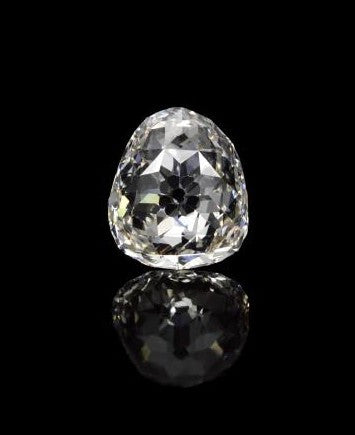The past six months have seen some extremely impressive auctions of diamonds and other jewellery, including a trade-off of extraordinary fancy yellow diamonds at Sotheby's and Christie's, not to mention the sale of Elizabeth Taylor's fabulous jewellery collection at the latter.
Now Sotheby's Jewellery department is setting out its stall to make 2012 another great year for the business, with a celebrated and historical, yet rarely seen gem: the Beau Sancy diamond.
The diamond will be the highlight of its Magnificent Jewels and Noble Jewels on 15 May 2012.
Just as Taylor's La Peregrina pearl necklace was traced back to paintings of Spanish Royalty, the Beau Sancy was passed around the Royal families of France, England, Prussia and the House of Orange over a period of four centuries.
David Bennett, Chairman of Sotheby's Jewellery Department in Europe and the Middle East and Co-Chairman of Sotheby's Switzerland enthused: "The Beau Sancy is one of the most fascinating and romantic gems ever to appear at auction and it is an immense privilege for Sotheby's to handle the sale".
The diamond, like many of the most celebrated diamonds of history such as the Hope Diamond, probably hailed from Golconda in India, but was first acquired by the Lord of Sancy in Constantinople.
In 1604, Sancy sold the gem for 75 000 livres (25 000 écus) to Henri IV, whose wife Marie de Medici had expressed a keen desire to own it.
Queen Marie clearly maintained her high regard for the jewel, and can be seen wearing it on top of the crown for her coronation in 1610 in Frans II Pourbus, the Younger's portrait of her.
The Queen fled into exile following the assassination of Henri IV, and it was sold to Prince Frederick Hendrick of Orange-Nassau. It was used to seal the wedding of Frederick Hendrick's son, Willem, later Willem II of Orange Nassau (1631-1660), to Mary Stuart.
 Fit for a Queen (or several) - the Beau Sancy diamond |
In 1662, the Beau Sancy was pawned to settle her debts but it returned to the House of Orange-Nassau in 1677, on the occasion of the wedding of Willem III of Orange-Nassau (1650-1702) to Mary II Stuart, daughter of James II of England.
In 1689, the pair took the English throne and so the Beau Sancy was briefly part of the Royal collections of England.
In 1702, following the conclusion of infighting amongst the heirs to the House of Orange, Friedrich I, newly the first King of Prussia, gave up his family jewels to gain the Beau Sancy and so through generations of German Royalty.
Exhibited only four times in five decades, the Beau Sancy will be offered with a somewhat modest estimate of $2m-4m.






